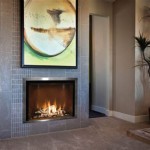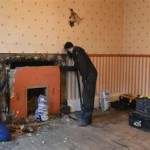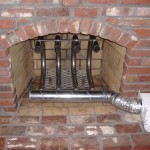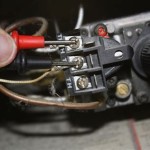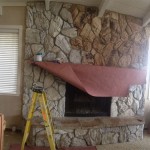Antique Wooden Fireplace Surrounds: A Legacy of Craftsmanship and Elegance
Antique wooden fireplace surrounds are prized for their historical significance, intricate craftsmanship, and the warm ambiance they bring to interior spaces. These surrounds, often dating back to the 18th and 19th centuries, represent a tangible link to past eras, reflecting the design sensibilities and woodworking techniques of their respective periods. The appeal of an antique wooden fireplace surround extends beyond mere functionality; it is an aesthetic statement, a focal point that elevates the overall character of a room, adding both visual interest and a sense of timeless elegance.
The construction and design of antique wooden fireplace surrounds varied significantly based on the prevailing architectural styles and the affluence of the homeowner. Early examples often exhibited simpler designs, reflecting the utilitarian needs of the time, while later Victorian and Edwardian surrounds showcased elaborate carvings, ornate moldings, and sophisticated details. The type of wood used, the carving style, and the overall dimensions provide valuable clues to the age, origin, and social context of the surround.
Understanding the Historical Variations
One of the most compelling aspects of antique wooden fireplace surrounds is the diversity of styles they encompass. Georgian surrounds, for example, are characterized by their symmetry, classical motifs, and use of fine hardwoods such as mahogany and walnut. Adam style surrounds, popular during the late 18th century, feature delicate detailing, often incorporating swags, urns, and fluted columns. Victorian surrounds, in contrast, tend to be more ornate, with elaborate carvings, dark finishes, and a profusion of decorative elements. The selection of an antique surround should ideally complement the architectural style of the building in which it is being installed to create a cohesive and harmonious aesthetic.
Furthermore, the geographical origin of an antique fireplace surround plays a significant role in its design and construction. English surrounds, for instance, often exhibit a distinct elegance and restraint, while French surrounds may feature more flamboyant carvings and a greater emphasis on curves and ornate details. American surrounds, influenced by both European styles and the availability of local materials, present a unique blend of influences, reflecting the evolving cultural landscape of the United States.
Materials and Craftsmanship
The choice of wood used in the construction of antique fireplace surrounds is a key factor in determining their value and durability. Hardwoods such as mahogany, oak, walnut, and cherry were commonly employed due to their strength, stability, and attractive grain patterns. Softwoods such as pine and poplar were sometimes used for secondary components or in areas that would be painted or gilded. The quality of the wood, the skill of the woodworker, and the overall attention to detail are all indicative of the value and desirability of an antique surround.
Antique fireplace surrounds were often crafted using traditional woodworking techniques such as hand carving, joinery, and veneering. Hand carving, in particular, was a highly skilled art form, requiring years of training and a deep understanding of woodworking tools and techniques. Intricate carvings, such as floral motifs, scrollwork, and architectural elements, added depth and visual interest to the surround, transforming it into a work of art. The presence of hand-carved details is a hallmark of high-quality antique surrounds and a testament to the skill of the artisans who created them.
Preservation and Restoration Considerations
Antique wooden fireplace surrounds, being of significant age, often require careful preservation and restoration to maintain their structural integrity and aesthetic appeal. Before undertaking any restoration work, it is essential to assess the condition of the surround thoroughly, identifying any areas of damage, decay, or instability. Common problems include cracks, splits, loose joints, missing pieces, and damage from insects or moisture. The appropriate restoration techniques will depend on the nature and extent of the damage.
Cleaning antique wooden fireplace surrounds should be done gently, using mild soap and water and a soft cloth. Avoid using harsh chemicals or abrasive cleaners, as these can damage the finish and the wood itself. Waxing or polishing the surround can help to protect the finish and enhance its luster. If the surround has been painted, it may be necessary to remove layers of paint to reveal the original wood beneath. This should be done carefully, using appropriate paint removal techniques to avoid damaging the underlying surface.
In cases where the surround is significantly damaged or has missing pieces, professional restoration may be necessary. A qualified conservator can repair cracks, replace missing pieces, and stabilize the structure of the surround. The goal of restoration should be to preserve the original character and integrity of the surround while ensuring its long-term stability. It is generally preferable to use traditional materials and techniques whenever possible, to maintain the authenticity of the antique.
Antique wooden fireplace surrounds are not simply decorative elements; they are historical artifacts that provide insights into the past. Their enduring appeal lies in their timeless elegance, intricate craftsmanship, and the sense of warmth and character they bring to any room. By understanding their historical context, construction techniques, and preservation needs, one can fully appreciate the value and beauty of these remarkable pieces of history.

Antique Fire Surrounds And Inserts Mantelpieces Grates Victoriana

Antique Wooden Fireplace Mantel Carved With Satyr And Columns 19th Century Italy For At 1stdibs Mantels Mantles

Antique Combed Stained Fireplace Mantel With Insert And Hearth Surrounds

Vintage Fireplace Mantel Recycling The Past Architectural Salvage

Baroque Antique Wood Fireplace Mantel Westland Antiques
Reclaimed Antique Mahogany Wood Fireplace Surround E A Reclamation

Antique Wood Fireplace Mantle 1850s For At Pamono

Restoration Resources New England S Primary Source For Authentic Architectural Antiques Wood Mantels Section

Antique Napoleon Iii Style Oak Wood Fireplace With Jf Initials

French Hand Carved Wood Fireplace Mantel Wooden Antique Mantels Surround
Related Posts

